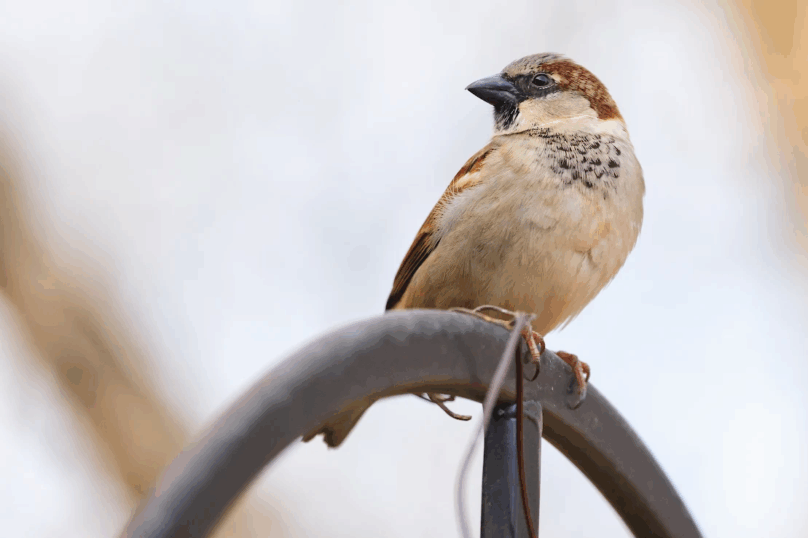
DIY vs. Professional Sparrow Control: When to Call the Expert
Sparrow control begins with recognizing that sparrows, though small, are remarkably persistent. They thrive in both urban and rural environments, finding shelter in vents, rafters, awnings, and loading docks. Their nests can block drainage systems, while their droppings corrode building materials and introduce health hazards. Businesses, in particular, feel the impact, as customer impressions, compliance requirements, and safety standards leave little room for bird-related issues. Effective sparrow control is therefore not just about removing nuisance birds, but also about protecting structures, safeguarding public health, and preserving a good reputation.
Exploring the DIY Approach to Sparrow Control
For many property owners, the first instinct is to take matters into their own hands. DIY sparrow control offers a sense of control, reduced upfront costs, and the possibility of quick fixes. Homeowners may try reflective tape, plastic decoys, or even homemade barriers. In small-scale or early-stage issues, DIY sparrow control can temporarily reduce bird activity and discourage nesting. However, the success of these efforts depends heavily on consistency and vigilance. Without regular monitoring, sparrows quickly adapt and return to their favored nesting spots.
Practical Exclusion Strategies for Sparrow Control at Home
Exclusion is one of the most reliable DIY strategies for sparrow control because it focuses on removing access points rather than chasing birds away after they’ve settled. By physically blocking entry, you reduce the chances of sparrows nesting inside your property, protecting both the structure and your peace of mind.
Use Mesh to Cover Vents
Installing durable mesh over vents prevents sparrows from slipping inside while still allowing airflow to circulate. When fitted tightly, it creates a long-term barrier that requires little upkeep.
Seal Gaps in Siding
Small cracks or openings in siding give sparrows easy access. By sealing them properly, you eliminate hidden nesting spots while also improving your building’s insulation.
Screen Soffits and Overhangs
Adding screening to soffits or roof overhangs blocks hidden areas that sparrows often choose for nesting. This approach blends with the home’s structure, making it both effective and discreet.
Inspect Barriers Regularly
Even strong exclusion systems weaken over time. Routine inspections allow you to spot damage early and reinforce weak points before sparrows return.
Sparrow Control and the Use of Deterrents
Deterrents are another standard tool in DIY sparrow control. Property owners may experiment with reflective tape, shiny objects, or predator decoys to deter birds. While these can provide short-term relief, sparrows are intelligent and adaptable. Over time, they often habituate to static deterrents. To keep deterrents effective, you would need to rotate or combine methods frequently, which can be time-intensive.
The Hidden Challenges of Managing Sparrow Control on Your Own
While DIY approaches may seem appealing, they often fall short when faced with established infestations. Sparrows reproduce quickly, and missing even a few nests can allow populations to rebound. DIY methods also demand ongoing labor, tools, and vigilance. For businesses, downtime and reputation costs often outweigh the savings of do-it-yourself efforts. Ultimately, DIY sparrow control is better suited for early intervention rather than long-term or large-scale solutions.
Sparrow Control by Professionals: What Sets Experts Apart
Hiring professionals for sparrow control ensures that infestations are handled with precision, compliance, and long-term effectiveness. Unlike DIY efforts, expert strategies focus not only on removing sparrows but also on preventing future problems through advanced techniques and tailored solutions.
Conduct Detailed Inspections
Professionals begin with a thorough survey of the property to identify nesting sites, roosting areas, and food sources. This careful mapping allows them to design solutions that address the problem at its root.
Design Tailored Interventions
Instead of one-size-fits-all fixes, experts create interventions customized for each property’s layout and needs. These can include netting, spikes, or other architectural modifications that keep sparrows out without damaging the structure.
Use Specialized Tools and Technology
Professional sparrow control often relies on tools and deterrents unavailable to the average property owner. From sound-based systems to discreet exclusion devices, these methods maximize effectiveness while minimizing disruption.
Deliver Long-Term Reliability
Unlike temporary DIY fixes, professional solutions are designed for durability and sustainability. By addressing both immediate symptoms and long-term risks, experts reduce the likelihood of sparrows returning.
Sparrow Control Through Tailored Exclusion Engineering
Exclusion remains the cornerstone of professional sparrow control, but experts take it to another level. Instead of generic mesh or spikes, professionals design exclusion systems that fit each structure’s unique features. Netting, wiring, or screening is engineered to withstand weather, blend with architecture, and prevent even the most persistent sparrows from gaining entry. Professionals also ensure these solutions meet safety standards and avoid damaging the building itself.

Sparrow Control and the Use of Integrated Deterrents
Professional services often combine multiple deterrent methods into layered systems. For example, reflective devices may be paired with low-voltage track systems, sound emitters, or motion-based deterrents. These integrated approaches make it much harder for sparrows to adapt, as no single measure can be easily ignored. By layering deterrents, professionals create an environment that is consistently inhospitable to sparrows without posing harm to the birds or building occupants.
Compliant Sparrow Control for Safer Commercial Properties
Legal compliance is another advantage of professional sparrow control. Trapping, relocation, or nest removal must align with wildlife protection laws, which vary by state and region. Professionals understand these regulations and ensure that interventions remain lawful, humane, and effective. They also handle contaminated materials—such as droppings, feathers, and nesting debris—safely, thereby reducing the health risks associated with exposure to bird waste.
Sparrow Control and Long-Term Maintenance
Even the best sparrow control systems need consistent upkeep to stay effective over time. Professional maintenance ensures that exclusion barriers remain strong, deterrents continue working, and new vulnerabilities are addressed before sparrows can exploit them.
Inspect Systems Regularly
Experts schedule follow-up visits to check the condition of netting, wiring, or screening. These inspections enable the early detection of wear and tear that could otherwise allow sparrows to return.
Adjust and Upgrade Deterrents
Deterrents lose effectiveness if sparrows adapt, which is why professionals rotate or enhance them as needed. This flexibility keeps environments consistently unwelcoming to birds year after year.
Reinforce Weak Points
Buildings naturally shift and weather over time, creating new gaps or access points. Professionals reinforce these areas quickly, preventing small weaknesses from escalating into major infestations.
Provide Service Agreements
Many commercial properties benefit from long-term service agreements with bird control experts. These contracts offer peace of mind by ensuring sparrow control is monitored and managed without interruption.
Sparrow Control Decision-Making: DIY or Professional?
When deciding between DIY and professional sparrow control, context is everything. A homeowner with a single sparrow nest can successfully exclude and deter sparrows with DIY methods. By contrast, a warehouse with multiple roosting areas and sensitive operations cannot afford partial or temporary solutions. Businesses, hospitals, schools, and food-processing plants, in particular, benefit from professional services, where liability, safety, and compliance are paramount. In short, DIY sparrow control may suffice for minor issues, but professionals are essential when scale, complexity, or risk increases.
Why Expert Sparrow Control Is More Cost-Effective Than DIY
From a cost standpoint, DIY methods may appear cheaper initially. However, repeated nest removals, replacement of damaged materials, and lost business opportunities add up quickly. Professional sparrow control represents an investment in prevention, reducing long-term costs and liabilities. By safeguarding property and operations, expert services often prove more economical over time than piecemeal DIY attempts.
Sparrow Control in Commercial and Industrial Settings
In commercial or industrial environments, sparrow control becomes even more critical. Nesting near HVAC systems, machinery, or food storage areas introduces risks that extend far beyond mere inconvenience. Bird waste can contaminate products, clog ventilation systems, and even pose fire hazards. Professional bird control services understand these environments and implement solutions designed to minimize downtime while maximizing effectiveness.
Sparrow Control and the Importance of Early Action
Regardless of whether you choose DIY or professional services, early intervention is key. Sparrows breed quickly, and what starts as a few nests can balloon into a large colony in a single season. Addressing issues promptly reduces costs, minimizes disruption, and prevents the need for drastic measures later. For this reason, sparrow control should never be delayed once signs of infestation appear.

Choosing the Right Path in Sparrow Control
DIY sparrow control has its place, especially for small-scale problems or as a first line of defense. Yet the limitations of DIY methods become clear as sparrow populations expand, buildings grow more complex, or compliance stakes rise. Professional sparrow control provides tailored, comprehensive solutions that address immediate problems and prevent future ones. For property owners serious about protecting their investments and health, knowing when to call in the experts makes all the difference.
To learn more about DIY vs. professional sparrow control, visit our Elite Bird Management blogs.




